In 2017, more than half of them passed. After half a year's hustle and bustle, we finally ushered in the National Day holiday of the Eleventh National Day. Every year during the eleven long holidays, some people choose to purchase home appliances or choose to decorate. This year is no exception. With the improvement of people’s living standards, consumers’ demand for home entertainment has also increased. In recent years, particularly hot television products have become an indispensable device for home entertainment.

The future of laser TVs and OLEDs
As the center of home entertainment, the rapid development of television is obvious to everyone. From the initial black and white television to the CRT, experiencing the short-lived plasma and other short-lived phases, to LCD dominate the market, new concepts are emerging, such as: Quantum dots, OLEDs, laser televisions, and so on, people are moving further and further away in the pursuit of products with larger picture sizes, clearer picture quality, and brighter colors. When LCD TVs are limited by the constraints of manufacturing costs and other conditions, they cannot meet the increasing appetite of consumers. Laser TV is emerging as a new type of solution in people's eyes.
What is laser television?
Actually, laser television is not a new concept. As early as in the 1990s, technology prototypes were introduced. In 2003, laser television prototypes were introduced. In the following three to four years, consumer electronics giants such as Mitsubishi and Sony have also successively invested in laser televisions. In the market, laser TV prototypes have been produced and successively produced. However, due to poor sales and technical bottlenecks, these international electronics giants have withdrawn from the laser TV market.

Laser TV born consumer experience super screen
Although in many waves of display technology, domestic manufacturers are following in the engraved attitude, but with the withdrawal of international electronics giants, domestic manufacturers have seized the opportunity to lay out their R&D efforts and achieved significant results. In a few short years, Hisense, Optoma, Komi, BenQ and other manufacturers have withdrawn from the laser television. This situation means that the "explosion period" of laser television has arrived.
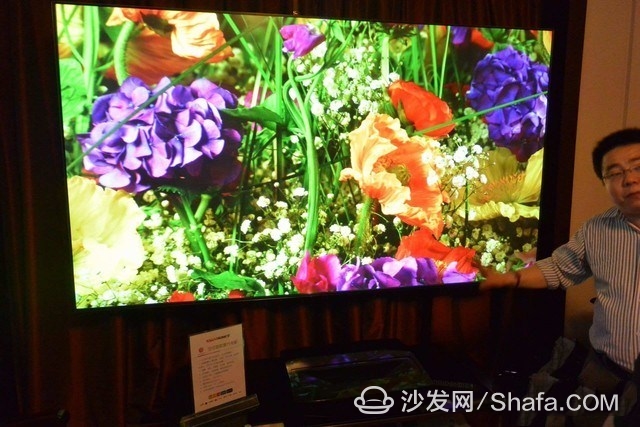
The rapid rise of domestic laser TV
Laser TV is so hot. So what is laser television? In fact, laser television is not a traditional projector. Traditional projectors only make optimizations in terms of picture color and brightness, while laser televisions use laser light sources, which not only improve the color performance of the screen, but also have higher requirements for the use of the environment. At the same time, laser televisions have more complex systems.

Laser TV not only has a projection host, it also has anti-light curtain, intelligent system, audio unit, which is a solution-type product, not a single projector. Therefore, it is not as simple as buying a projector.
What are the advantages of laser television?
The reason why this new type of display device is called laser television is to allow consumers to pay more attention to this type of product. After all, the concept of television has been developed for many years and it is well-received, and the projector seems to be ordinary people. Life is still far apart. In fact, laser TVs do indeed occupy a part of the market for ordinary LCD TVs. What are the advantages of laser TVs compared with LCD TVs?
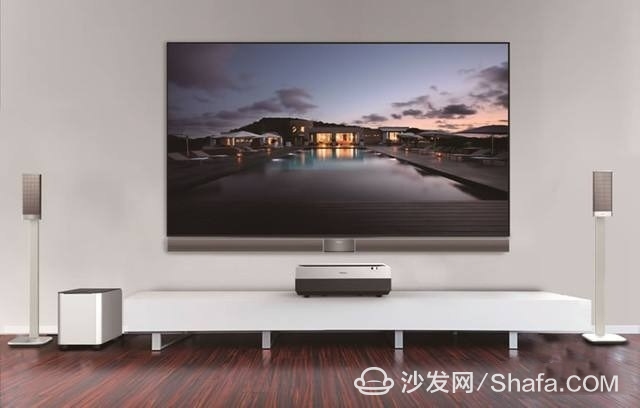
Laser TV has many advantages over LCD TVs
Larger and lower cost
Laser TV targets the large-size market of 60 inches and above. With the increasing demand of consumers for large-screen display devices, the market for large-size display devices is growing at an exceptionally rapid rate. LCD TVs do not have an advantage in the large-size market, but are limited by the cost of production. A 60-inch LCD TV will cost at least 500,000. The 100-inch TV is far beyond the capabilities of the consumer. Outside. The laser television can easily be 100 inches or more, but the price is only one-tenth of the same size LCD TV, so in the realization of large size, laser TV not only has more room for development, its economic effect is also more Ok.
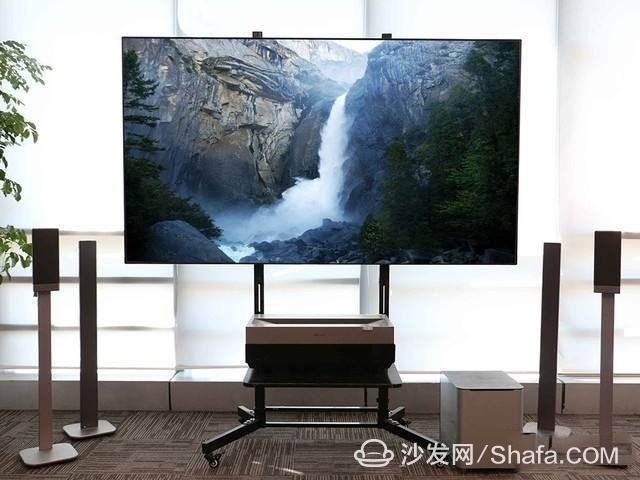
Large-size pictures are more popular
Color advantage born beauty
Although the colors of many LCD TVs are now creating a mystery concept, such as quantum dot technology and color enhancement functions, the fact that LED TVs use LED light sources cannot be changed. This simple blue LED hybrid yellow phosphor light source forms a short board in the color gamut and color purity. It is difficult to really make up for the color in the later period. Since many laser televisions have been upgraded to two-color lasers, the technical essence of the two-color laser light source is to use both red and blue laser diodes simultaneously, and to have two color wheels at the same time. In this way, the color purity, brightness, and color of the laser television screens. The domain has been greatly improved.

Stronger color expression
Diffuse reflection more eye
It is a well-known fact that LCD TVs have hurt their eyes. This is because LCD TVs use polarized light. Polarized light is prone to damage to the eyes for a long time. Especially for children, the structure of the eye is not fully developed yet. Polarized light damage to the eyes can not be ignored. The light of the laser television is reflected by the anti-light curtain, and the light of the screen is directed in all directions. This is very similar to the imaging method in the natural world. The diffuse reflection method reduces the damage to the human eye.
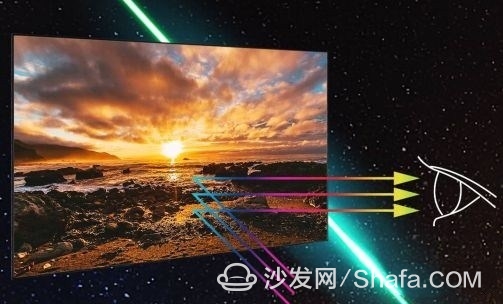
Low energy consumption, energy saving and energy saving
From the perspective of the actual screen size, laser televisions do show the advantage of energy saving. With 100-inch and above screens, only 300 watts can be used to achieve the output of the screen. Even if 10 hours of continuous use is less than 2 yuan, The cost is still very low. In contrast, the required energy consumption of a 100-inch LCD TV is very impressive. So from the comparison of unit picture size and energy consumption, laser television is a better choice.
Who better than laser TV VS OLED?
Nowadays, OLED breaks LCD's status in dominate the display market, continuously expands the market camp, and many manufacturers are also quickening the popularity of OLED TVs. Because OLED TVs have self-luminous characteristics, they bring people a more pure black, and also captured the hearts and minds of many consumers with their novel lightweight designs.

OLED TV looks unique and unique
Even so, OLED TVs still have shortcomings in terms of high power consumption, low brightness, and short lifetime, and the high cost of OLEDs has also become one of the reasons that hinder the rapid development of OLED TVs. Although OLED has made a lot of optimizations and upgrades during the development of television intelligentization, when large-size TVs with sizes larger than 60 inches have become mainstream, OLED TVs appear to be stretched.
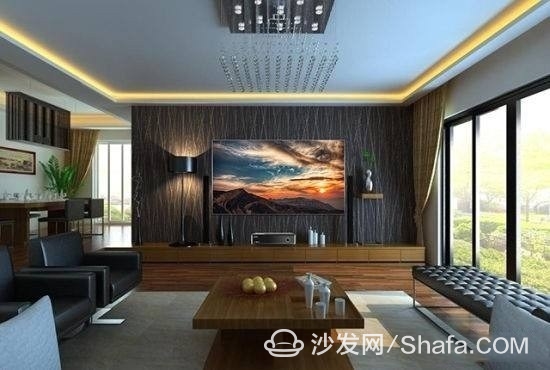
Laser TV can easily achieve large size display
If you want to put a large screen display device in your living room, watching the distance becomes a non-negligible condition. Since the 60-inch LCD TV has a safe viewing distance of 4 meters or more, considering the common housing specifications nowadays, it is not possible to watch a large LCD screen in the living room (a villa-level user can ignore it). The emergence of laser television just eased this embarrassing situation. A 100-inch laser television was placed in the living room. It only required 4 meters of viewing distance to be able to watch safely, and there would be no feeling of discomfort.

More than 60-inch LCD TV security sight is 4 meters away
In addition to the necessary visual safety distance, screen brightness and power consumption still plague the development of OLED TVs. More than 50% of the power consumption of OLED TVs comes from the screen. The larger the screen size, the greater the power consumption, and the increased screen size has higher requirements for materials and processes. Laser TV does not need to worry about the brightness of the screen. With the constant optimization of technology in recent years, the laser TV can achieve an average brightness of 2300 ANSI lumens. In the future, it may be upgraded to 3000 ANSI lumens, so that it can satisfy basic households.
Written at the end: OLED TVs have been hot for several years, but there is still no greater breakthrough. Due to cost constraints, it is impossible to break through large-size screens and the market share is not high. The development of laser TV as a display product at the same time as OLED has witnessed rapid development in recent years. It has become a dark horse in the large-size screen market, and laser TV is accompanied by a downward trend in price. It is believed that in the future, laser televisions will be large. Size screen market will occupy the dominant position.
Widely Used Nail Staples,Upholstery Fences Staple,Factory Special Application Staple,Cages Hog Rings Nail
Zhejiang Best Nail Industrial Co., Ltd. , https://www.beststaple.com